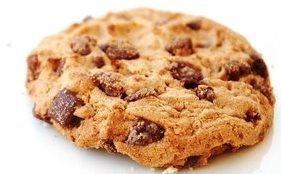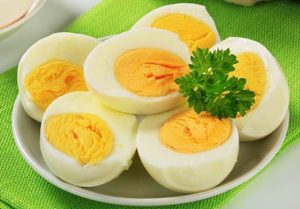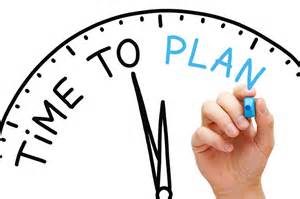I met Shelly when she came into our 10 Weeks to Health program a few months ago. When she called to make her appointment, she told me over the phone that her doctor had been nagging her for a while to lose 5 – 6 kilo to improve her health. Slight high blood pressure and pre-diabetes had been a concern for a while but she had also been having left knee pain due to a slightly torn meniscus. The orthopedist told her to “lose a few kilo so we won’t have to operate.” At first glance, it didn’t seem like losing 6 kilo should have been such a big deal.  Shelly wasn’t very overweight and this should not have been a big challenge. Even with her knee issue, she was able to walk and was doing so daily. She had a good basic understanding of what healthy eating entails. Shelly was bothered that she couldn’t lose this moderate amount of weight that would probably make such a big difference in her life.
Shelly wasn’t very overweight and this should not have been a big challenge. Even with her knee issue, she was able to walk and was doing so daily. She had a good basic understanding of what healthy eating entails. Shelly was bothered that she couldn’t lose this moderate amount of weight that would probably make such a big difference in her life.
As part of Shelly’s initial intake, I went over the exercise routine she was currently doing. I did revise and revamp a few things, but all in all, she was mostly doing the same aerobics and muscle building exercises she had been doing. I emphasized to her the need to start stretching as well. We decided to add in stretching in a few weeks’ time.
My 6th sense told me Shelly’s issue was not exercise related. If anything, it was her exercise that kept her health issues from spinning out of control. There were a few things the dietician discovered that seemed to stand out as the probable cause of Shelly’s lack of weight loss.
Shelly’s daily caloric intake was not terribly out of line for someone of her height and weight. But, she was consuming most of her calories in two or three meals a day. So why is that problematic? If she can consume 1325 calories a day and not be hungry and slowly lose weight, what difference does it make if she eats them in 2 or 3 sittings as opposed to 5 or 6 sittings? Well, it can make a big difference!
Importance of eating more frequently
You see, if we consume fewer calories per sitting and work on a 3 meal plus 2- 3 snacks formula, we have a much better chance of succeeding with weight loss. I know–the word snack used to be a “dirty” word.  It had connotations of eating unhealthy foods like cookies, a chocolate bar or bag of chips. Yet we now know that appropriate snack foods, when eaten in proper amounts and at the right intervals, can be very good for our health.
It had connotations of eating unhealthy foods like cookies, a chocolate bar or bag of chips. Yet we now know that appropriate snack foods, when eaten in proper amounts and at the right intervals, can be very good for our health.
When you eat smaller amounts more often, three important things occur.
- It helps prevent over eating. If you come into regular meals overly hungry this can cause overeating.
- Eating a lot of food after a long gap of not eating will cause insulin spikes. This in turn can lead to type 2 diabetes.
- One of the key ways to speed up your basic metabolic rate is to eat more often. Every time you eat, you get a slightly elevated metabolism for some time after the meal or snack.
So if you consume a controlled amount of food every 3-4 hours, you will have this metabolic boost throughout the day. A small study published in a 2005 issue of the American Journal of Clinical Nutrition looked at whether meal frequency and spacing affected the post-meal metabolic rates of 10 women. When the women ate 6 times a day at predictable intervals, it boosted their post-meal metabolic rate more than when they ate the same number of calories at 3-9 unpredictable intervals.
What are considered healthy snacks?
There are a lot of healthy snack options that can keep you full in between meals:
Nuts or Chickpeas—Studies have found that people who chewed nuts thoroughly felt full longer than those who chewed the same amount of nuts fewer times. Plus, nuts deliver filling fiber, protein and healthy fats.

Fruits—Fruits are generally healthy and not terribly high in calories. They contain a lot of vitamins, antioxidants, and fiber. However, they are naturally high in sugar, so they do need to be limited and it is usually a good idea to eat a protein together with it so you feel full.
Dried Fruits–Dried fruit is a portable, healthy snack. Eating dried fruit helps with weight-loss because it’s packed with filling fiber (and important vitamins and minerals). Look for dried fruit with no sugar or sweeteners added and as with regular fruit, limit your quantities.
Hummus—Pack up this healthy snack at home and take it with you to work or school. You’ll save money and get a bigger bang for your nutritional buck. Try cut up veggies and some hummus. This will provide both carbohydrates and protein that will help tide you over until the next meal.
Yogurt—This snack will provide calcium and fiber—two nutrients that people often skimp on. Yogurt with fruit delivers calcium and fiber, plus protein and gut-healthy probiotics. Also, it comes in containers that are exactly a portion, so you don’t have to figure that out. Read the ingredients however—some yogurts are sugar heavy.

Hardboiled Eggs— Eggs are one of the healthiest and most weight loss-friendly foods you can eat. They contain protein, vitamin D, K2 and B12, to name a few. Eggs are incredibly filling and may reduce the amount of calories you eat for many hours. Although their high cholesterol content gave them a bad reputation for many years, all recent studies show that eggs don’t have any effect on your risk of heart disease. Two large, hard-boiled eggs contain about 140 calories and 13 grams of protein.
Cheese— Cheese is a delicious food that’s filling enough to be a snack on its own. Although cheese is high in saturated fat, if you keep your portions reasonable, it won’t harm your health. Studies have shown that up to 2 servings of cheese per day don’t raise LDL cholesterol levels, even in people with elevated cholesterol. A 2 ounce (60 grams) serving of cheese contains about 14 grams of protein and 200 calories.
Giving perspective to your snacking
As our lifestyles have become more and more hectic, people eat more grab-and-go snack foods instead of sit-down meals. Research published in Appetite in January 2018 shows that just seeing the word snack on a food label may lead us to eat more. In this study, people were monitored eating food “on the go” and then eating the exact same food seated at the table. The result: Those who ate the “snack” pasta consumed more calories afterward than those who ate the “meal” pasta sitting at a table.
You can see there is a tendency to overconsume when not seated. We need to make snacking a positive behavior for health and weight loss. It’s a good idea to think of your snacks as meals and to sit down to eat, even if it’s a single-serving yogurt or handful of nuts.
Switching to smaller and more frequent eating
As we mentioned, eating small amounts more often can prevent diabetes, many of the adult diseases, and it definitely helps weight loss. But this, like all habit changes, doesn’t just happen. It requires planning.  The better you plan and schedule, the more likely you are to succeed. These basic ideas can also be very helpful on Shabbos. Now that we are in the longer, summer Shabbatot, planning a mid-afternoon snack (and not noshing all day) will help you get to the third Shabbat meal without starving and without over-consuming calories.
The better you plan and schedule, the more likely you are to succeed. These basic ideas can also be very helpful on Shabbos. Now that we are in the longer, summer Shabbatot, planning a mid-afternoon snack (and not noshing all day) will help you get to the third Shabbat meal without starving and without over-consuming calories.
We took the principles of frequent eating and smaller portions and applied them to making a plan for Shelly. Keeping her daily schedule in mind, we made order out of Shelly’s eating so that she now eats 5 times per day, and avoids eating past 8:30 at night. Two weeks later, Shelly’s weight began to drop at an average of 400-500 grams per week. Clearly, the way she had been eating was having a negative effect on her efforts to lose weight. We didn’t change the amount of food—caloric consumption—very much.
Shelly kept up her exercise routine and three months later, and 4.5 kilo lighter, she went back to her doctor. The improvements in her blood work and her blood pressure were enough to keep her off medication and enough to alleviate most of the knee pain she had been experiencing. All of these good results happened from adding snacks, not by taking food away. Snacking, when done in a healthy manner, will “add hours to your day, days to your year and years to your life.”

Fascinating.